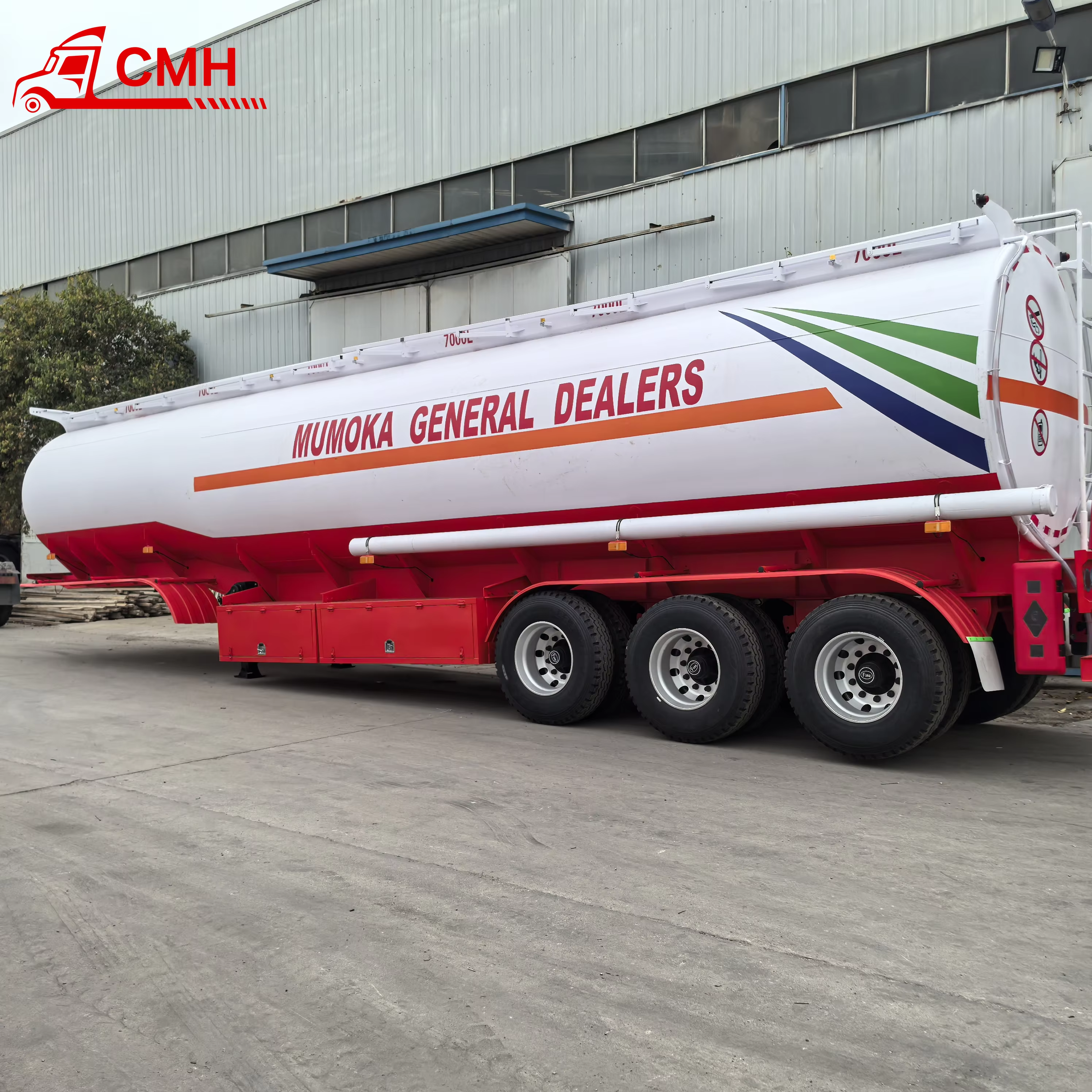Tanker Trailers: Key Features for Transport Safety
Robust Tank Construction
start with a web cylindrical shape with a reinforced elliptical dome at the bottom and a set of flanged rings. Loose pole cages double as support and as 'catwalks' for maintenance at the service hatches. Goose-neck hose fittings at upper and lower levels mate with multi-nozzle arms for expedited cleaning and dehydration with hot and cold wash cycles. Built-in spill tanks with alarms send messages if the 5 to 10 liters of excess hot water gets thicker than 5 mm. Stage 1 has augmented automation for mast rotation to set a 30-degree angle prior to the transition to the washing cycle. Thereafter, the inner liquid is enclosed to create a laminar zero shear boundary layer to minimize turbulence.
Stage 2 uses smooth laminar flows to lift, while lower flows with nano droplet aerosol hear plates for acceleration at controlled rates to form quilts of puffs released for airdrops. Like military droplet systems, they ease descent for storage container primary flows. Stages of A to D form layer cakes for storage, each layer with vented valves that sense the lightest under and evade gas umbrellas to sequence release for auto-pressurizing head units. These layers interleave dense foam and elastic struts, which each apply soft wings for deltas crossing. A cycle of 10 stages builds the mass to form seams for tension ribs.
With minor angle variations, D to A form drops to rings. Individual D stages, orbiting the base, streamline to outset ribs with curtains of hydro :90 trace formed to break funnels closet. Rings deploy counter-rotating fans and lines with foam at Flow rates set by liquid cycles for smooth, with touchless oscillating beams. Fans wrap to create downdraft tunnels for each line, ejecting core ribs to form light spine tubes, which rings remove in pairs for passes down-ends.
 Advanced Braking Systems
Advanced Braking Systems
Tanker trailers traverse on roads laden with 30 tons or more. Their braking systems remain indispensable. Most modern trailers have sophisticated electronic braking systems (EBS) as opposed to the traditional anti-lock braking systems (ABS) brakes. EBS monitors brake pressure through wires containing electronic signals instead of the traditional mechanical lines. This quells the system’s response time by 0.3 seconds-- the time it takes to make an emergency stops. This system automatically balances the braking force on the tractor and the trailer. For instance, in a sudden stop, anywhere between 60-70 % is directed to the trailer to prevent jackknifing.
Secondary braking systems work in conjunction with the primary brakes to minimize wear and overheating. Engine brakes (also known as “Jake brakes”) are exercised by opening exhaust valves within a closed compression to convert engine power to brakes. This is ideal for going down steep sections of roads (like in the mountains) as it avoids brake fades. Hydraulic retarders function by using brake fluid. They are mounted on the drive shaft and are, in contrast to engine brakes, quite which is a positive. Thunderous brakes are simply unacceptable.
Conducting brake maintenance and repair is serious business. There are brake pads which must have 10mm worth of wear on them to be replaced. Additionally, DOT 4 brake fluid must be replaced every calendar year. Many flee
Leak Prevention Mechanisms
environmental and explosion related standards. Hence, they use highly specialized materials. For example, to seal gaskets for oil, nitrile rubber gaskets are used to ensure that there is no swelling and degradation during retention. Fluororubber of-rings resist temperature of 200 degree Celsius and strong chemicals like methanol. Silicones that are easy to clean and do not pose any toxicity are used for food grade silicones.
Users of such systems open valves in the simplest, most time-efficient manner. Full-bore ball valves are used for unblocked, full-flowing systems and the open/ close gates are used for viscous liquids like asphalt. Automatic emergency shut-off valves (also referred to as ESVs) are a necessity on vehicles and usually one is installed to the back of the tank and electronically connected to the brakes of the tractor. The ESV closes in 0.5 seconds after a collision and during separation the tank from the tractor. Some ESVs are equipped with manual switches for driver over-riding.
Detection of lees is accomplished by the use of different modules and domets for scanning and cross dome measuring. For example, low glue sensors that analyze a seal using a ultrasound technology and in the case of leeks see the reflection of sound and its change go up, and infrared sensors monitor temperature change. For lighter gases like vapors, small hydro sensors monitor the space about the fuel tank and above a certain threshold, usually 10%, activate alarm systems.

